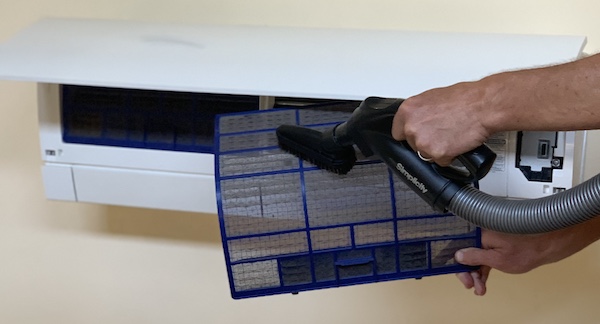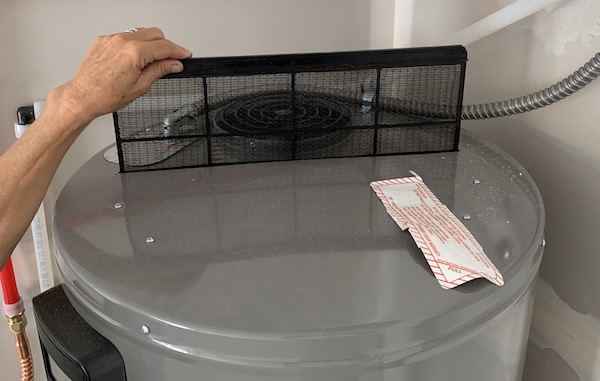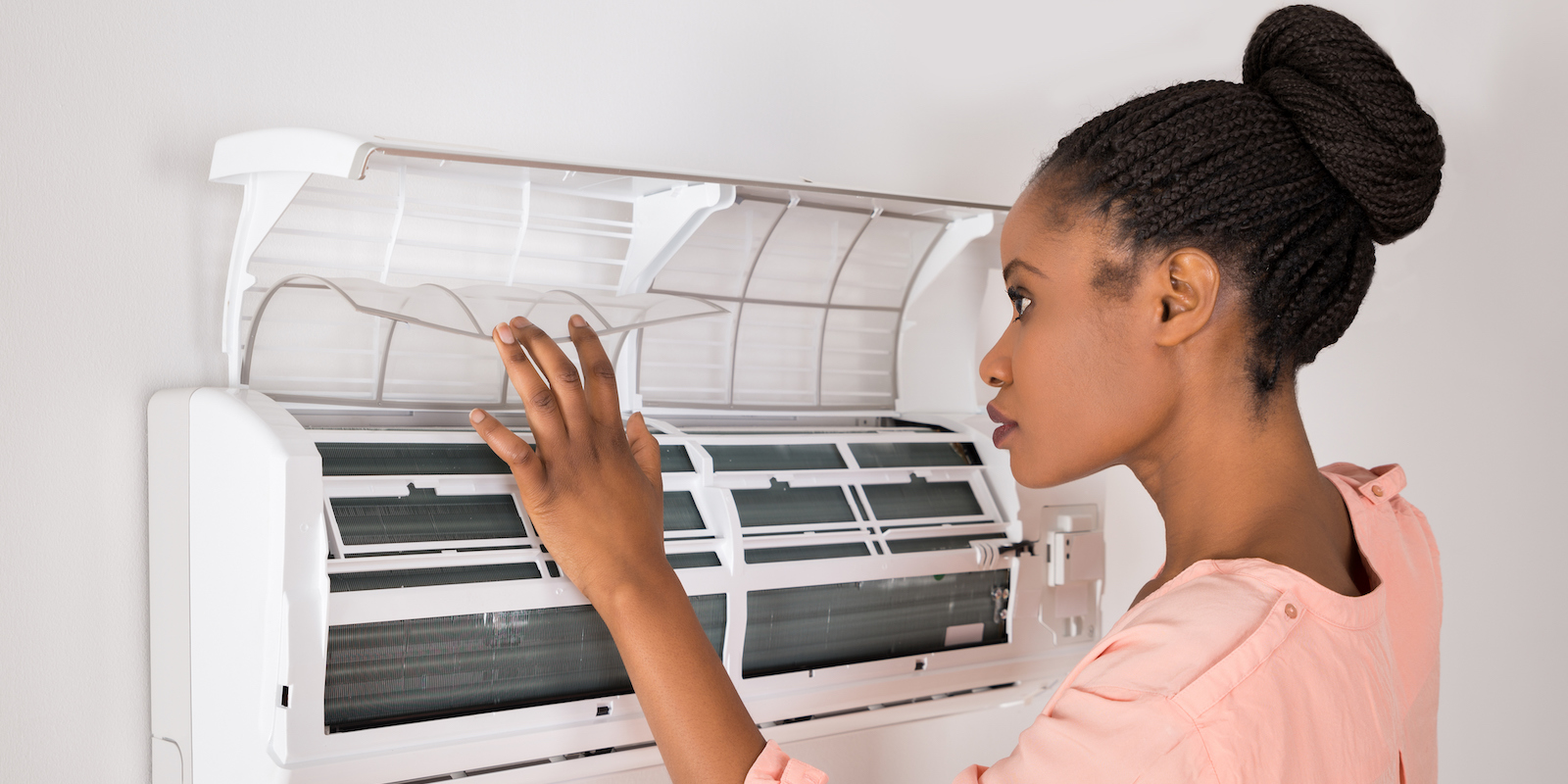Zero energy homes will be the new standard for the 21st century. They represent a big leap in design, construction, and technology. After the excitement of moving into your new zero home subsides, you may wonder if maintenance of its highly energy-efficient technologies will be a challenge? Fortunately, for most zero energy homes maintenance is simple and on par with maintaining a conventional home.
A zero energy house has the same four primary systems as any home: ventilation, heating/cooling, water heating, and appliances — all selected for high energy efficiency. It’s easy to keep them all running smoothly. Here are some general guidelines. Basically, it’s about keeping things clean to maintain optimal functioning of these systems.
Owner’s Manuals
The builder of a new home, or the previous owner of an existing home, should provide the owner’s manuals for each system and appliance. Each manual will explain the operation and maintenance details. If the manuals aren’t provided with the house, they can usually be found online by conducting a simple internet search of the manufacturer and model. Before working on any home appliance, read the manual and be sure to disconnect the power if instructed.
Ventilation
Zero energy homes are super tight and require a controlled ventilation system to provide fresh filtered air without wasting the energy used for heating and cooling. These highly energy- saving fresh air ventilation systems may include spot ventilators for specific or small areas or central models that ventilate the entire house. The air flow of the ventilators and the running time regulate the amount of outside air that moves through the house and was determined by the HVAC specialist based on the size and design of the house. Consult the builder or HVAC specialist who installed the system if recommended run times and other operational details are not clear.
The larger, central systems are referred to as heat recovery ventilators (HRVs), or energy recovery ventilators (ERVs). For simplicity, let’s call all types HRVs.
Spot ERVs should be cleaned every four to six months. Remove the grille and wipe it off with a damp cloth or the brush attachment of a vacuum cleaner. Also clear dust accumulation from the fan blades and the inside of the fan housing and duct as much as possible. There may be a back draft damper where the duct connects to the fan housing. Be sure that the damper moves freely. The duct should lead to an outside grille, so clear any dust away from it as well.
Central HRVs have grilles in several rooms that should be wiped clean when dust accumulates. They also have outside intake and exhaust grilles with screens to keep debris out of the system. These screens should be checked frequently and cleaned as when debris starts to accumulate.
The HRV unit itself is a large box containing two fans, the heat recovery core, and two filters. Depending on manufacturer guidelines and conditions in the home, these components should be cleaned every three to six months. Open the cover and remove the filters. Some filters are made of plastic foam that can be washed with warm soapy water in a sink. Others are disposable paper filters that must be replaced. If the HRV uses disposable filters, it’s a good idea to order a small supply so they are always on hand when needed.
While the unit is open, use the brush attachment on a vacuum cleaner to remove any dust from the inside of the housing and the openings where the ducts connect. Also vacuum the fan blades, if they are accessible. Slide out the heat recovery core, it can be vacuumed gently too. The core may have a limited service life and need to be replaced at some point. Consult the owner’s manual for details.
Heat recovery ventilators have a condensate drain. It’s a small tube that connects to the bottom of the unit. While the unit is open, vacuum out the condensate pan and look for any evidence that the drain is blocked. This may be visible debris or water stains. Cleaning an ERV is the same as cleaning an HRV except that it doesn’t have a condensate drain.

To clean the mini-split filter use the vacuum brush attachment or soak the filter in warm soapy water.
Mini-split Heat Pump Systems
Many zero energy homes use ductless mini-split heat pump heating and cooling systems that have two units: inside and outside. The most common type of inside unit hangs on the wall. It has a screen filter. Lift the front cover of the unit and gently remove the screen filter. Soak the filter screen in warm soapy water and rinse. Allow it to dry and return it to the indoor unit. Light dust can be removed with the brush attachment of a vacuum cleaner. Do this every month or two or whenever it appears to be accumulating dust.
The outdoor unit can be cleaned with a gentle spray from a garden hose. Check the tiny aluminum fins on the outdoor coil. If many of them are bent, they may need the attention of a trained technician. Also, be sure air is free to flow around the unit and isn’t blocked by vegetation, piles of stuff, or other obstructions. In winter, clear any ice or snow accumulation around the outdoor unit so it doesn’t interfere with air flow.
Mini-split heat pump systems usually require less maintenance than other heating and cooling systems. If they are keeping the house comfortable, they are probably working fine. If the output doesn’t seem adequate, it may be time to call the service technician.
Unlike conventional furnaces, properly sized mini-splits work most efficiently and comfortably when they are set to the same temperature night and day. Variable speed operation and the greater thermal stability of zero energy homes means that temperature setbacks aren’t necessary.

Clean the filter on the heat pump water heater every 3 -4 months with warm soapy water.
Heat Pump Water Heaters
After about 10 years on the market, the current generation of heat pump water heaters (HPWHs) are becoming common in new homes and as replacements in older homes. They’re also called hybrid water heaters because they use two methods for heating water. The primary method is a small heat pump that uses as little as one-fourth the energy of a typical water heater. As backup, hybrid heaters also have a conventional electric element. For highest efficiency and greatest economy, the HPWH should be set to run only in heat pump mode. If guests are expected or teenagers live in the house, then the hybrid setting that uses the back- up electric element when needed will ensure that everyone has enough hot water.
It’s also possible to set the water delivery temperature. The factory setting on many water heaters is 120°F, which is considered a good setting for energy efficiency, safety, and long service life. If it seems that there isn’t enough hot water, bump the setting up to 140°F. This higher temperature means that less water from the tank is used because more cold water is mixed in at the faucets to achieve the desired temperature.
Air is being cooled as it passes through the heat pump, which means that water vapor sometimes condenses. This water is carried away by a condensate tube leading to a trapped drain or a utility sink. In some cases, a small condensate pump is required to carry the water to a proper location. Look for any evidence that the condensate line is blocked and clear the obstruction, if necessary.
HPWHs will often alert you to any immediate maintenance issue by displaying a code on the control panel. Look up the code in the owner’s manual to identify the problem. Heat pump water heaters do have one additional maintenance measure not necessary for conventional water heaters:. Flushing the sediment, whether it is a standard version or a heat pump version will help the water heater last longer and operate more efficiently.
The heat pump relies on a steady flow of air and there is a screen filter to keep dust out of its coils. The screen filter covers the air intake. Remove the filter. Wash it with warm soapy water and rinse, or vacuum with a brush attachment.
Leaving the house for more than a couple of days? To save more energy, set the HPWH to vacation mode. Choose the number of days you’ll be gone. The water heater will wake up from its vacation and be up to temperature when you return.
Heat Pump Clothes Dryers
Instead of venting to the outside, heat pump clothes dryers collect and condense the moisture removed from clothes. Some models have a small pump that pushes this condensate to a nearby drain. In this case, check for signs that the pump is keeping up and not allowing water to overflow. Other models collect condensate in a pan that must be emptied after each load. Like all the other heat pump appliances, dryers need free flowing air to work properly. Every few months, it’s necessary to check and then remove any dust accumulation from the heat pump coils. The location of these coils differs with the model, but the coils are generally accessible from the front of the appliance near the floor. Use a vacuum cleaner to remove dust. As with all dryers, the lint filter must be cleaned after every use.
Whether highly energy-efficient or standard, regular maintenance keeps household systems and appliances humming along efficiently and allows them to serve you for a long time. While each appliance is a bit different, the basic idea is to read the manual and keep them clean. Removing household dust is easy to do. Regular cleaning also gives you a chance to notice if something isn’t right. Are pieces missing? Is there water or signs of wetness where it should be dry? Do you hear unusual noises? Keeping up with routine cleaning will give your appliances a long and efficient life. The concept is basically the same whether you have a conventional home with inefficient systems or if you have stepped up to a much more energy- efficient, modern zero energy home.

